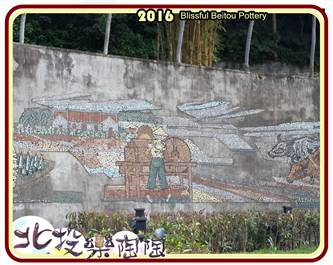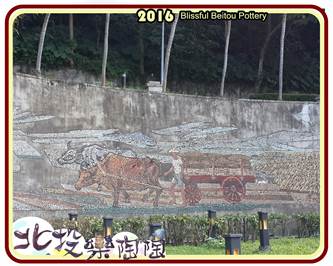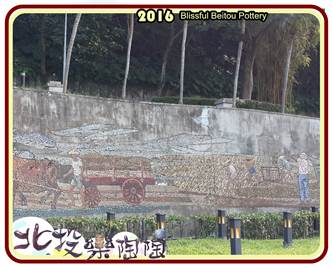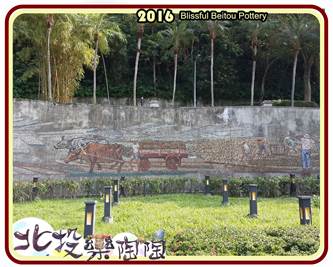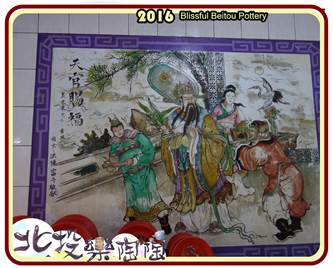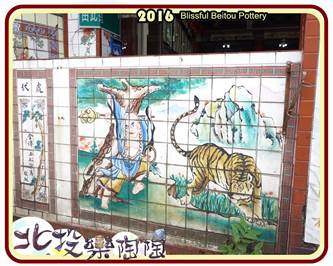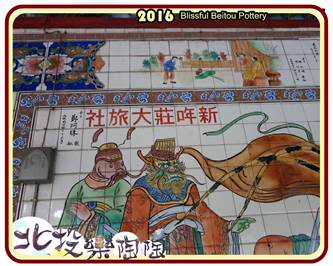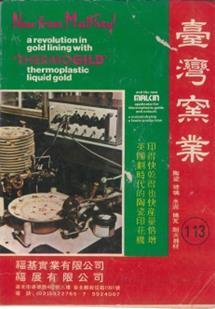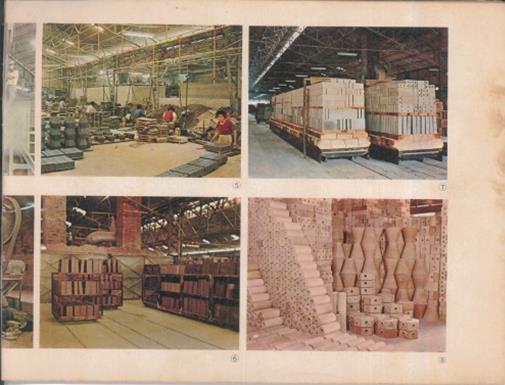

|
Construstion Ceramics:
Lincoln Center, located in Nanhai Road, Taipei City, is former Taiwan Education Center built in Showa six years (1931), Japanese colonial period. For displaying Taiwan's educational outcomes and meetings. Out of Taiwan education hall is full of typical 1930s style brown tiles. There are thirteen grooves on these tiles, so there are also called "thirteen grooves tiles." National Taiwan University, formerly known as the Taipei Imperial University, start-up in 1928 for training Taiwanese and further research Southeast Asia. The majority of campus, unified architectural style, becoming Taiwan's most representative late 1920s building. College of Liberal Arts and Administration Building and other slightly with classical-style building, wall stickers with "Beitou produced brown brick." Taipei Post Office is located in North Gate, rebuilt in 1929 as a reinforced concrete building. Designers, Kuriyama Shunichi, use eclectic style building so in the detail is still classical. Exterior wall tiles and washing finish of stucco are characteristics of the times.
Taiwan Ceramic Tile Corporation once the production has been stalled in the late World War II. About 1960s, the Taiwan mining company developed tiles again. At that time, the most representative works are Chinese mall building in Taipei city and Veterans General Hospital building. After the war, Beitou tile development changed from the initial 3.6-inch white tiles to mosaic tiles. Wherein mosaic tiles mostly are used in facades out of buildings, and most of the 3.6-inch brick used interior walls. Most of the larger scale kilns are able to make these two kind of bricks, 3.6-inch and mosaic tiles. In postwar, Taipei buildings can often see these kinds of product, the outer wall of the Ambassador Hotel also use mosaic tiles made by Taiwan mining company. Because the size of mosaic tiles are so small and colorful, that it often used in tile-like inlaid. In Yuanshan Park nearby Zhongshan North Road, Taipei City, which has a tile-like wall, named as "Taiwan Rural", created by the senior painter Yan Shui-Long is the author of tile collage, is a typical representative works.
Located in Jiantan Park of Yuanshan, there is one big tile-like inlaid, "buffalo map", length for 100 meters, that is created by famous Taiwanese artist Yen Shui-long with mosaic tiles made from Beitou factory. Depicting the early years of Taiwan's traditional rural farming ground tranquil scene. Because of the substantial positive towards Taiwan industrial society on the occasion, the site of modern artistic expression of traditional agricultural life of public art, showing a deep sense of nostalgia and modern - vision, adding Yuanshan arts and cultural qualities, it is also witness the development of Beitou pottery.
Reference: Taipei Public Library
3.6-inch tiles name from it's a length of 3.6 inches square with the white glaze to impose. Since the ceramic doesn't easily contaminated with oil, and easy to clean, so they are widespread used in the kitchen and those place need to be kept clean, like bathrooms and other places, almost every family use them. These tiles are also commonly used as mediums of artistic expression. China pottery arts company also use of 3.6-inch tiles together into a substantial surface material in the above expression in the art of painting. After the war, people use these tile painting on the wall in the temple to replace the early stone carvings. Most of tile painting in the temple are historical figures, drama figures, or filial piety filial piety story to educate people. Mr. Wang Zhengxiong once served in Datong porcelain company is the specializes in serving on temple tiles painted works. Now you can see his lot works in Beitou temples and all over the province, it regard as a new religious art.
Fu An Temple located Kungkuan Road in Beitou, at first it only setup by some stones as a small temple for the God of land. Afterward, due to contributions from the faithful people, the small stone temple expans to the largest temple in Beitou. Multiple colorful mosaic mural on the wall of temple, they describe the traditional theme of the story, the history of piety persuading beneficence-based. The largest one over right side of temple, is a whole slice of Eight Figure Immortals, very spectacular. These tile murals are made by those factory nearby Guizikeng in Beitou and painted tiles. It's Beitou local culture faith heritage left by the only remaining relic, and worth to promote and conserve. Provided by Mrs. Zhu, the tour guide of Beitou Culture Foundation
Reference: Beitou pottery exhibition. Finding the source of modern pottery
Photos provided by Mr. Chen Qing-an |
2016 Li-Nong
Elementary School , Taipei , Taiwan - Pottery Pioneer
wwh@cc.lnes.tp.edu.tw

